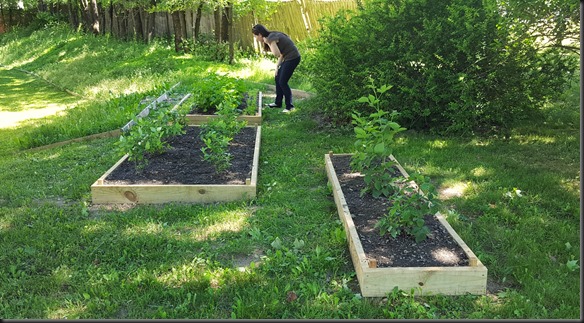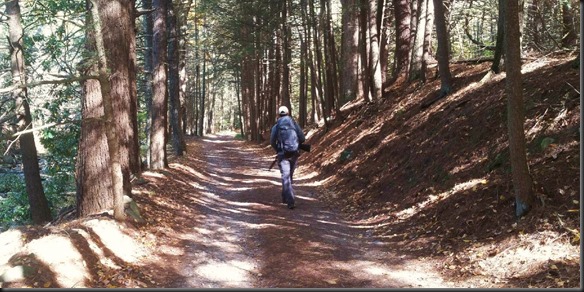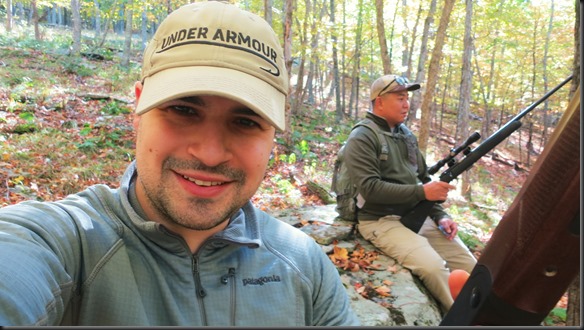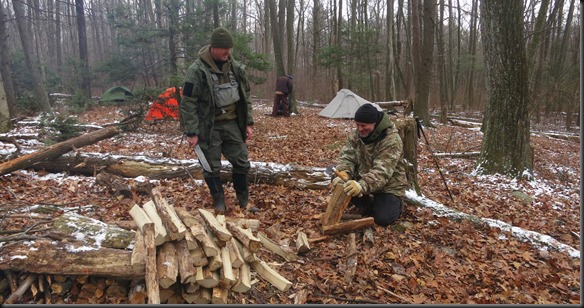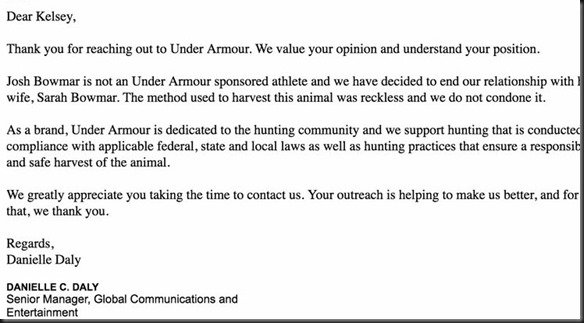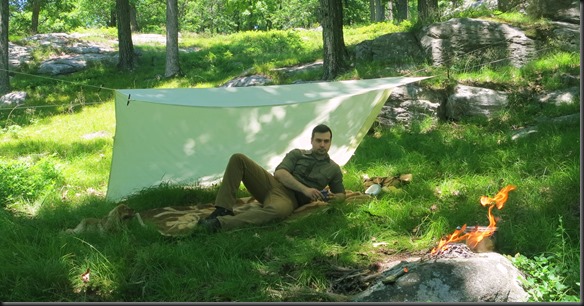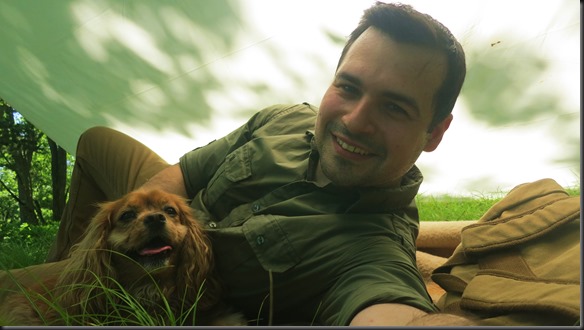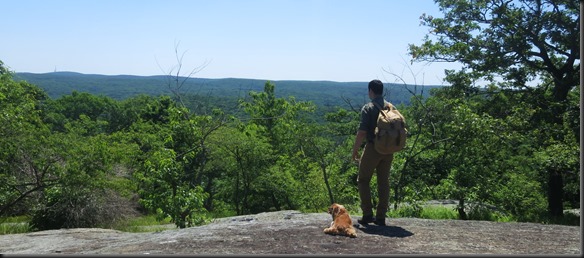The issue of stoves when it comes to
Classic Backpacking can be a bit complex.
The reason is that we have to look not only at the options available at the
time, but also at how and if they were used.
In this post I want to discuss the use of small stoves which would be portable
in a backpack by a single person. The sources are very limited with respect to
such devices. While stoves are indeed discussed at length, the discussions are
almost exclusively regarding large wood burning stoves designed to heat tents,
and which would be transported by pack train. There are however some small
segments, and some peripheral sources which can give us usable information.
It appears that in the early parts of the classic backpacking period, the
preferred backpacking stove was an alcohol burner. In the source materials they
are typically referred to as spirit burners or spirit lamps. The below
advertisement for a Gogau alcohol stove was featured in the 1904 Hardware
Dealers' Magazine, Volume 22. The J. Picard & Co Spirit Burner circa 1873
and the W.J.D. Mast Alcohol Lamp circa 1896 are also good examples of small,
portable alcohol stoves. Officer mess kits containing a similar alcohol stove
were popular during WWI.

While open burner designs like the ones we see most often today, as well as
pressurized versions like the one seen above were available in one form or
another, the preferred configuration appears to have been ones using a wick.
I’ve reached this conclusion based on the limited descriptions provided by
Edward Whymper, Fridrjof Nansen, and Warren Miller. It is possible that other
models were in wide spread use, but I have not been able to find any references.
“
The spirit-lamp was lighted, and the remaining spirits of wine, the brandy
and some snow were heated by it. It made a strong liquor, but we only wished for
more of it. When that was over, Macdonald endeavored to dry his socks by the
lamp, and then the three lay down under my plaid to pretend to sleep.”
Edward Whymper, Scrambles Amongst the Alps, 1872 p.26
“
For fuel there is, no doubt, nothing at all comparable with alcohol, which
should be as pure as possible. In addition to other advantages, such as its
cleanliness, it has the great merit of yielding more heat than anything else in
comparison to its weight… At the bottom is the heating-chamber, containing a
spirit-lamp with several wicks. The air enters by a number of holes at the
bottom in sufficient quantity to insure complete combustion, and, as it must
itself pass through or near the flames, it is either consumed or heated to such
an extent that no cold air can enter the apparatus. Should it be necessary,
owing to the overheating of the lamp, to let some cold air in, this can be done
by holes in the sides of the hot chamber… Experiments made after our return home
showed me that our cooker made use of only 52 per cent, of the alcohol consumed.
This is, of course, a somewhat extravagant use of fuel, though previous
expeditions do not seem to have been much more successful. Yet there is no doubt
that further improvements in this direction will lead to a considerable
reduction in the consumption of spirit.” Fridtjof Nansen, The First
Crossing of Greenland, 1890 p.36-38
The above quotes indicate that up to the 1890s, alcohol stoves, and in
particular stoves which used a wick to burn the alcohol, were used by climbers
as well as polar explorers. The preference for wick based stoves over other
burners which rely on vaporizing the fuel, is hinted at by Kephart on a later
date: “
In this instance it is an alcohol burner of common pad form, which is
less likely to get out of order than an alcohol vapor stove.” Horace
Kephart, Featherweight Camping in England, 1914
In 1892 however, a new stove design entered wide scale use, the Primus Kerosene
Stove No.1. While it was not the first kerosene stove, the Primus stoves quickly
gained popularity, and quickly started to replace alcohol stoves. The change is
exemplified by the writings of Fridtjof Nansen, who in the span of only few
years went from using an alcohol stove for his cold weather expeditions, to
using a Primus stove. The below advertisement from 1897 references as this being
the stove used by “Nansen the Explorer”.

“For the heating was used a Swedish gas-petroleum lamp, known as 'the
Primus,' in which the heat turns the petroleum into gas before it is consumed.
By this means it renders the combustion unusually complete. Numerous experiments
made by Professor Torup at his laboratory proved that the cooker in ordinary
circumstances yielded 90 to 93 per cent. of the heat which the petroleum
consumed should, by combustion, theoretically evolve. A more satisfactory
result, I think, it would be difficult to obtain… Together with two tin mugs,
two tin spoons, and a tin ladle, it weighed exactly 8lbs. 3ozs., while the lamp,
the "Primus," weighed 1lb 12oz.
As fuel, my choice this time fell on petroleum ("snow-flake".) Alcohol,
which has generally been used before on Arctic expeditions, has several
advantages, and, in particular, is easy to burn. One decided drawback to it,
however, is the fact that it does not by any means generate as much heat in
comparison with its weight as petroleum when the latter is entirely consumed, as
was the case with the lamp used by us. As I was afraid that petroleum might
freeze, I had a notion of employing gas-oil, but gave up the idea, as it escapes
so easily that it is difficult to preserve, and is, moreover, very explosive. We
had no difficulties with our "snowflake" petroleum on account of the
cold.” Fridtjof Nansen, Farthest North Volume II, 1897 p.113
This early use of the Primus stove however was not exactly the backpacking
application I am interested in here. The Primus No.1 stove is relatively heavy,
and is better suited to group use, in particular when carried by sled as it was
by Nansen, Shackleton, Scott, and Amundsen. Below you see such a stove used
circa 1911 together with a “Nansen Cooker”, a pot system designed to maximize
the use of the produced heat.
Portable models started to emerge in the early 1900s. From what I understand,
T.H. Holding used a specially modified Primus No.230, which could be carried on
a bicycle. He called it the Baby Primus.

“Why I was so slow to take up the "Primus" for Camping purposes, was because
of my hatred of paraffin. Experiments, begun fifteen years ago, both at home and
Sunbury Camp, showed what a powerful and efficient thing it was, but too big to
carry on a cycle. It took me three years to get a smaller size — 5-ins. across —
made, and then it had projecting legs. So I devised a second model and had the
feet set right underneath, the projecting pump shortened, and changed the valve
from the side to the top, christening it the " Baby Primus," which is the best
of all the "Primus" models. Still pursuing my Spartan notions re compactness,
space and solid packing, I designed the "So-Soon" pans for taking the "Primus"
stove inside. This, of course, for cycling… I unhesitatingly say that
the "Primus" in its revised form, with these beautiful light pans, is the most
efficient and suitable stove in the world for the average camper.” Thomas
Hiram Holding, The Camper’s Handbook, 1908 p.310-311
However, in my opinion, a truly portable, commercially available, kerosene stove
did not come about until circa 1908, with the Primus No.96. It had a half pint
capacity, and weighed 1lb 1.2oz (on my scale, without additional items).
Even so, the use of backpacking stoves remained extremely limited, especially in
the US. References in the texts of the time are rare, and the average woodsman
had no reason to use a stove rather than a fire. This attitude about backpacking
stoves is exemplified by Horace Kephart when writing about the gear of T.H.
Holding. “Since the English camper can seldom use wood for fuel, he is
obliged to carry a miniature stove and some alcohol or kerosene.” Horace
Kephart, Featherweight Camping in England, 1914
Until the mid 1950s, with the introduction of the Svea 123 and similar models
like the Primus No.71, the use of backpacking stoves was largely reserved for
people who traveled to areas where it was impossible to make a fire. In the US
that was restricted to climbing above the tree line and arctic exploration,
while in Europe stoves appear to have been more widely used, especially when
camping in more populated areas.
So, where does that leave us when it comes to the use of backpacking stoves when
trying to do Classic Backpacking? To me, it appears that the use of backpacking
stoves was reserved for times when it was not possible to make a fire. It seems
the woodsmen of the time would rather use a fire whenever possible, and I
imagine the average woodsman of the Classic Backpacking period might have never
seen a portable stove of the type discussed here. However, backpacking stoves
were available, and they were used when needed. In the US, where fire wood was
abundant, the use was reserved for climbing and arctic exploration, while in
Europe, where I imagine the use of fire was more restricted in some areas, the
stoves had greater popularity.
As such, I would say that when doing Classic Backpacking, a portable stove does
have it’s place. To be period correct, one would want to primarily rely on a
fire, but when that is not possible due to restrictions or unavailability of
wood, it would be proper to pull out the stove.
With respect to the actual stove designs, the choices would be either an alcohol
stove, with a preference for a wick based design, or a kerosene stove. Warren
Miller gives a good summary and description of the options:
“For work above timber-line, the camp-fire takes the form of a spirit or
kerosene lamp. Denatured alcohol, or just plain kerosene, costing a tenth as
much; both have one-hole and two-hole blue-flame burners available in light,
folding explorer's stoves. The kerosene-burners work on the principle of the
familiar gasolene plumber's torch, a little raw kerosene first being ignited to
heat the burner, after which the affair is self-vaporizing, and the height of
the flame is then controllable with a needle-valve. With these burners is
supplied a sheet-iron radiating drum for tent-warming, after the cooking is
done, and this drum serves as a packing-case for the lamp and its special
kerosene-can when on the trail. With denatured alcohol the process is even
simpler, the burner simply being lighted, when the hot blue flame of alcohol
vapor is at once available, and, of course, it gives many more heat-units per
pound of fuel than kerosene.
A rig similar to these which a friend of mine uses on his one-man hikes is
nothing in the world but a short, extra-fat candle with a big wick, the only
other apparatus besides the candle being a sheet-iron collar or spider, on which
the bowl or frying-pan rests, held by it a short distance above the flame. A
similar apparatus using solidified alcohol is on the market and gives much more
heat for the weight carried.” Warren Hastings Miller, Camp Craft, 1915
p.93-94
Above you see a picture of what I consider two good examples of backpacking
stoves from the Classic Backpacking period. One is a kerosene burning Primus
No.96 (left), and the other is a wick based alcohol stove (right).
It may be tempting to just pull out a Trangia Stove, especially since the
Trangia Company was established in 1925, within the Classic Backpacking period,
but unfortunately, Trangia did not start making alcohol stoves until the 1950s.
More accurate designs, either just open burners, or wick based burners can be
found on eBay, or made at home.
With respect to kerosene stoves, the choices are tougher. The best approach
would be to find an old kerosene stove like a Primus and restore it, like I did
with mine. I will do a separate post on doing a basic restoration. The Primus
No.96 was produced all the way through the 1960s. While there are small
variations between different years, the design was functionally the
same. Unfortunately, that is not a project everyone wants to undertake. A decent
alternative would be to purchase a new Svea 123 stove. They have some
significant differences from the early kerosene stoves, but are the closest I
have found on the market today.
I'm certainly not a "stove guy", so this has been just a very brief overview of stoves for Classic Backpacking. I'm sure there are many other options available and approaches you can take.


